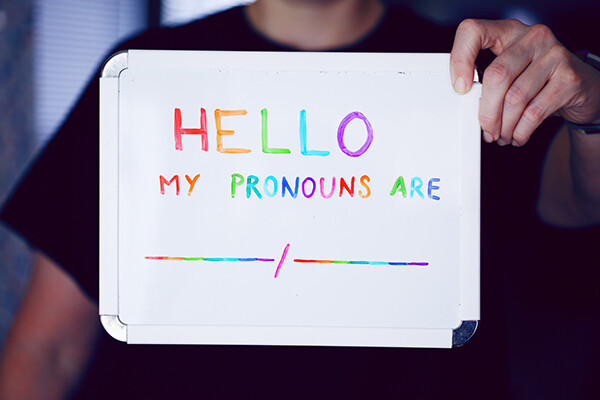The recent case of Mackereth v the DWP (DWP) and Advanced Personnel Management Group (UK) Limited 2022 looks into the topic of discrimination based on an individual’s gender-critical beliefs and provides further clarity into the area.
In the case of Mackereth v DWP, a Christian Doctor had refused to refer to transgender customers by their personal gender pronouns (PGPs).
As early as the induction in May 2018, Mackereth had stated that he would not use PGPs, as they opposed his own beliefs.
This was reinstated further by Mackereth in a subsequent email.
However, this contrasted with clear policies outlined by Mackereth’s employers, stating that transgender people were to be treated with respect and referred to by their PGPs at all times.
The employers tried to find ways to accommodate Mackereth in his position while maintaining the respect and rights of their transgender customers.
However, before this could be fully addressed, Mackereth had left the job and gone to tribunal with allegations of direct and indirect discrimination based on his beliefs, as well as claims of harassment.
Mackereth stated that his Christianity and associated beliefs were a protected characteristic, and as such, should be covered under section 10 of the Equality Act 2010.
However, the tribunal rejected Mackereth’s claims as they did not meet the criteria previously set out in an earlier and similar case.
Mackereth was also not seen to have been treated less favourably, harassed and/or discriminated against based on his beliefs.
The case was then brought to the EAT, who disagreed with aspects of how the tribunal assessed Mackereth’s beliefs against the test.
However, they also rejected Mackereth’s claim.
They saw that the employer had made attempts to accommodate Mackereth before any steps had been taken, and he had not been discriminated against or harassed based on the beliefs that he held.
What should employers take away from the Mackereth case?
This case, along with previous cases of discrimination based on gender-critical beliefs, identifies the sensitive nature of the topic in tribunal.
These cases are often very fact- and context-dependent, such as the particular position of the individual’s role within the Company, how that would impact customers and how the employer and employee reacted in terms of reasonable adjustments and accommodations.
Overall, it shows that employers have an important role to play in ensuring that the rights and respect of both customers and staff are met.
The employer in this case had tried to take responsibility for protecting their transgender customers, while also trying to make reasonable accommodations for their employee.
In a previous article, we have outlined some specific ways in which employers can ensure that they are inclusive to both staff and customers. Some of these suggestions include:
- Looking at your policies to check that they cover protection against discrimination or harassment based on gender identity.
- They should also include the employer’s, and the employee’s, responsibilities towards ensuring equality and inclusivity.
- And the Company should outline any procedures for complaints and/or reports relating to discrimination, bullying or harassment.
- Providing communications and/or relevant training to ensure all staff are aware of their responsibilities in relation to equality and inclusivity, including introducing them to the appropriate use of non-binary pronouns.
- Identifying possible barriers and/or issues that could be raised in the context of your organisation, and looking for potential solutions (e.g., providing gender-neutral facilities and uniforms, and including gender-neutral titles in any forms and documentation issued by the Company).
- Avoid making any assumptions regarding gender identity.
You should never force staff or customers to disclose their gender identity.
But if they choose to disclose their PGPs, you should allow them to do so.
And if you’re unsure, provide your own PGPs and include them in your email signature to normalise the gesture.
Read our previous article on understanding gender identity, using PGPs, and how employers can support gender identity in the workplace.
Stay in the know
We’ll keep you up to date with all the latest in employment law and HR. You can unsubscribe at any time.


Recent Comments